Welcome to Ceramic Review
Ceramic Review is the magazine for contemporary and historical ceramics, ceramic art and pottery.
Ceramic Review Issue 334
July/August 2025
Ceramic Review is the magazine for contemporary and historical ceramics, ceramic art and pottery.
July/August 2025
Elena Howard discusses the creative fusion of ceramics and artificial intelligence
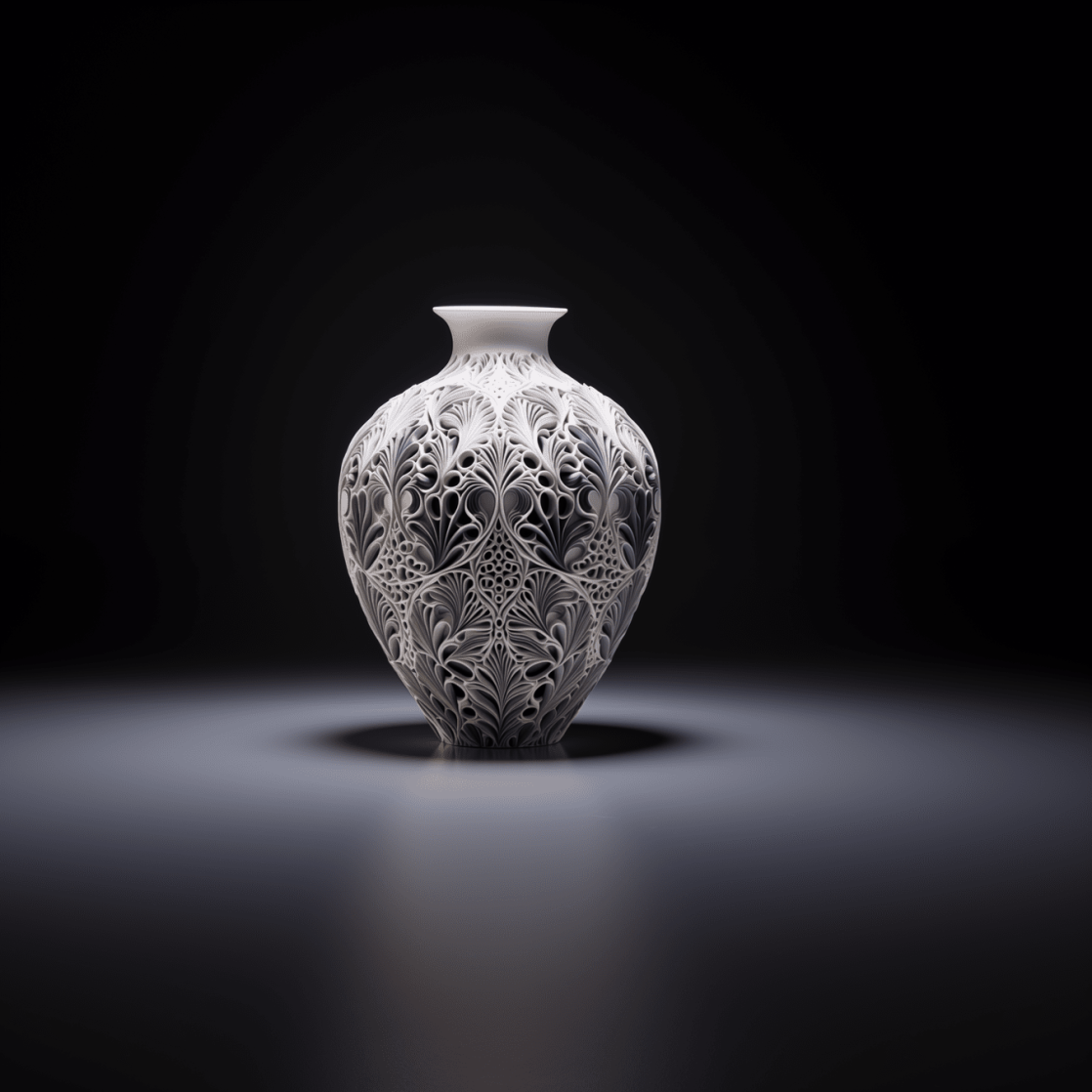
Artificial intelligence (AI) is a rapidly advancing technology that is transforming various industries, including ceramics and arts. This intersection isn’t a transient trend but rather a burgeoning movement that has the potential to reshape the very essence of ceramic art, from algorithm-assisted designs that bring intricate patterns to life to AI-guided production techniques streamlining the creative process. The pace of AI technology development is swift and relentless, ushering in continuous innovations that transform once expensive and limited systems into powerful, widely accessible tools, democratising the artistic landscape and opening new horizons in ceramics and beyond.
ARTISTS USING AI
Outside ceramics, AI-integrated art is blossoming. Projects like Refik Anadol’s Unsupervised at the Museum of Modern Art in New York and Memo Akten’s interactive installations exemplify the innovative use of AI in art. Artists like Sougwen Chung, who collaborates with AI-driven robots, and Jake Elwes, whose work addresses biases in AI, demonstrate the diverse applications of this technology in the creative process.
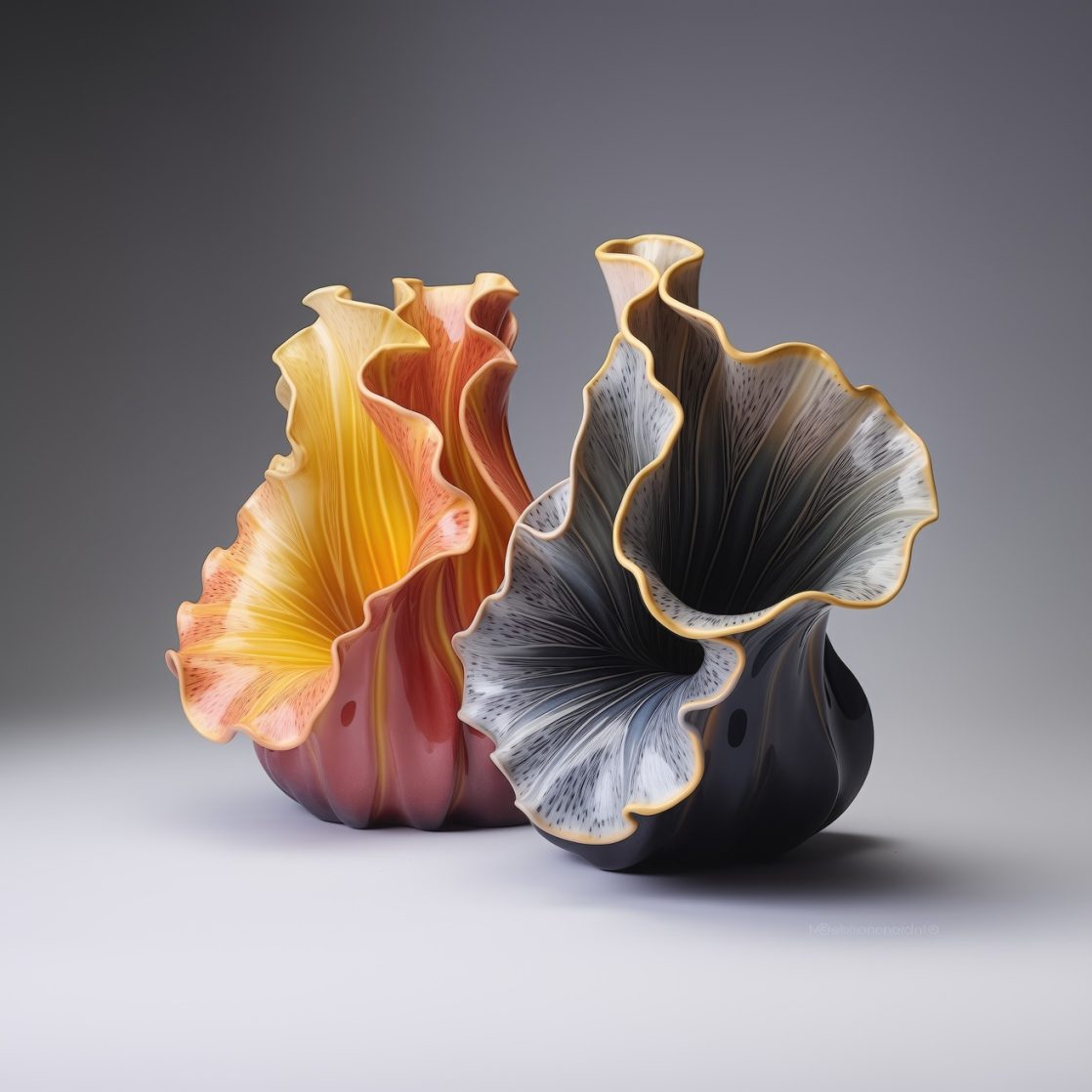
Contemporary ceramic artists are also increasingly integrating advanced technologies, bordering on AI, into their ceramic practices.
Nicolas Touron employs 3D clay printing, transforming digital designs into tangible sculptures. This approach blends the precision of digital technology with the hands-on aspects of traditional sculpting, allowing for the rapid prototyping of designs and the creation of unique, intricate pieces that push the boundaries of conventional ceramics.
Brian Peters also specializes in 3D printed ceramics, and uses this technology to produce large-scale public artworks and interior installations. His works include unique textures and designs achieved through hand-finishing, glazing, and firing processes.
Megumi Naitoh has developed a technique called Orimeware, which merges 3D models and origami-like techniques with slip-casting. She digitally models a form, unfolds it into a two-dimensional pattern, then uses this pattern to create a voluminous form for slip-casting.
Jay Jensen utilizes digital CAD technology to design his forms. He transfers these designs into slab-built pottery decorated with graphic patterns. Jensen’s process adds a transformational step to the ceramic process, linking modernist design with architecture.
These artists are at the forefront of integrating digital technologies into ceramic art, showcasing how advanced methods like 3D printing, digital design and computational tools can transform traditional practices.
ETHICAL QUESTIONS
As AI entwines itself with the ancient art of ceramics, it brings a host of ethical considerations. Central among these is concern over the potential loss of traditional skills and techniques. While AI offers new avenues for creation and experimentation, there is a palpable fear among some artisans that the reliance on digital tools might overshadow the hands-on, tactile essence of ceramic art, and that technology will eventually replace a human artist.
AI’s capabilities in design, pattern generation, and even in some aspects of production, like kiln control, can challenge traditional methods. This technological intrusion prompts a crucial ethical question: to what extent should AI influence a craft deeply rooted in tactile, human experience? While AI can enhance efficiency and precision, there is a growing concern about preserving the ‘human touch’– the imperfections and unique qualities that make each piece distinctively human-made. The key lies in finding a balance, where AI is viewed not as a replacement but as an extension of the human artist.
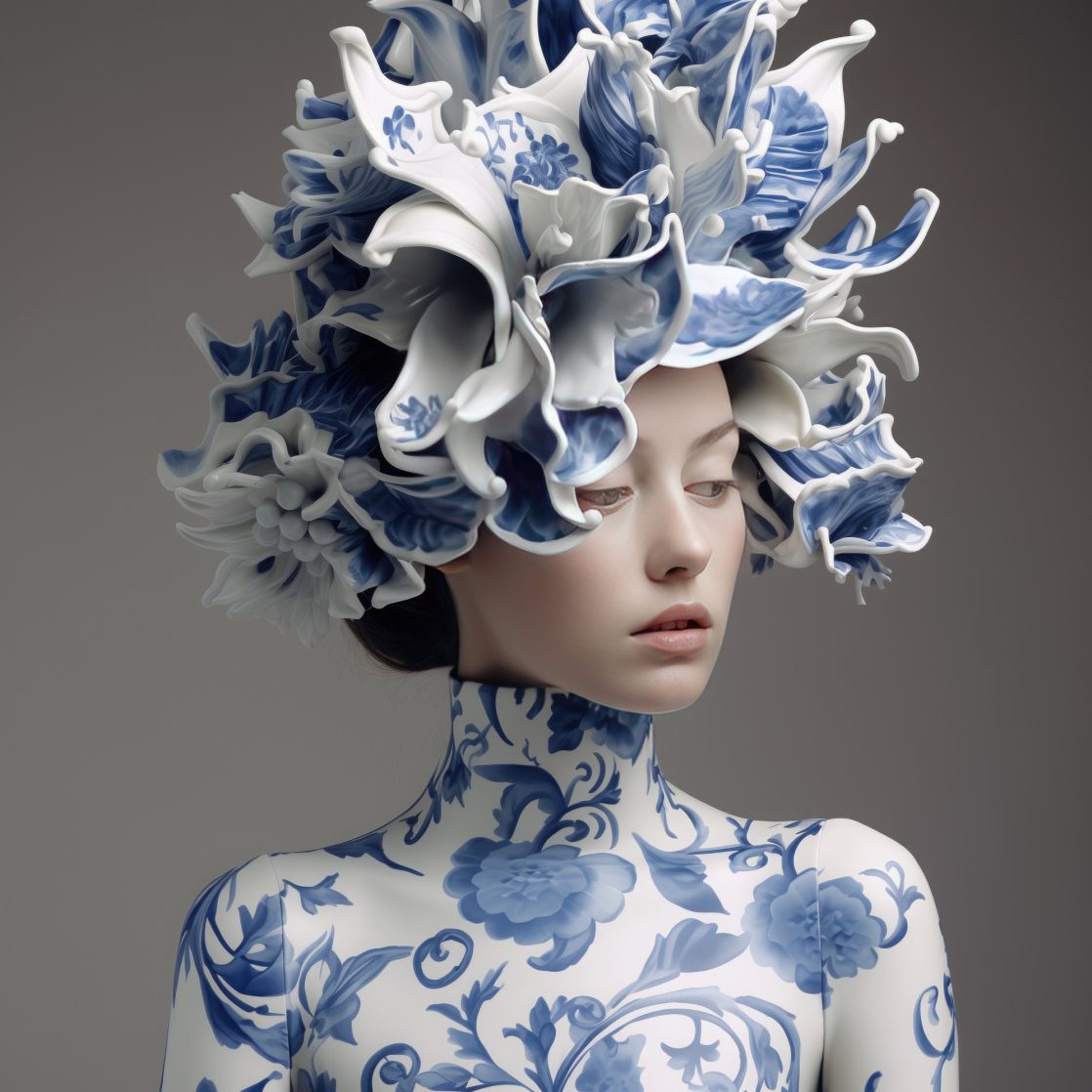
The complexities of artistic authorship also stir up significant debate. When a piece is designed with the aid of AI, who exactly is the artist? Is it the programmer who designed the AI, the ceramicist who inputs into the AI, or the AI itself? This conundrum challenges our traditional understanding of creativity and authorship.
Another ethical dimension is the sustainability of AI-driven practices. As ceramic artists increasingly adopt digital techniques, it becomes imperative to consider the environmental impact of these technologies. The energy consumption of AI systems and digital equipment must be weighed against the environmental ethos many ceramicists hold dear.
Furthermore, AI’s role in the appropriation of designs should be considered. When AI systems are fed data from diverse cultural artworks, there’s a risk of cultural misappropriation and homogenisation. Artists must navigate these waters carefully, ensuring that AI is used as a tool for learning and inspiration, not for erasing the nuances of cultural heritage, or for copying the styles of other artists.

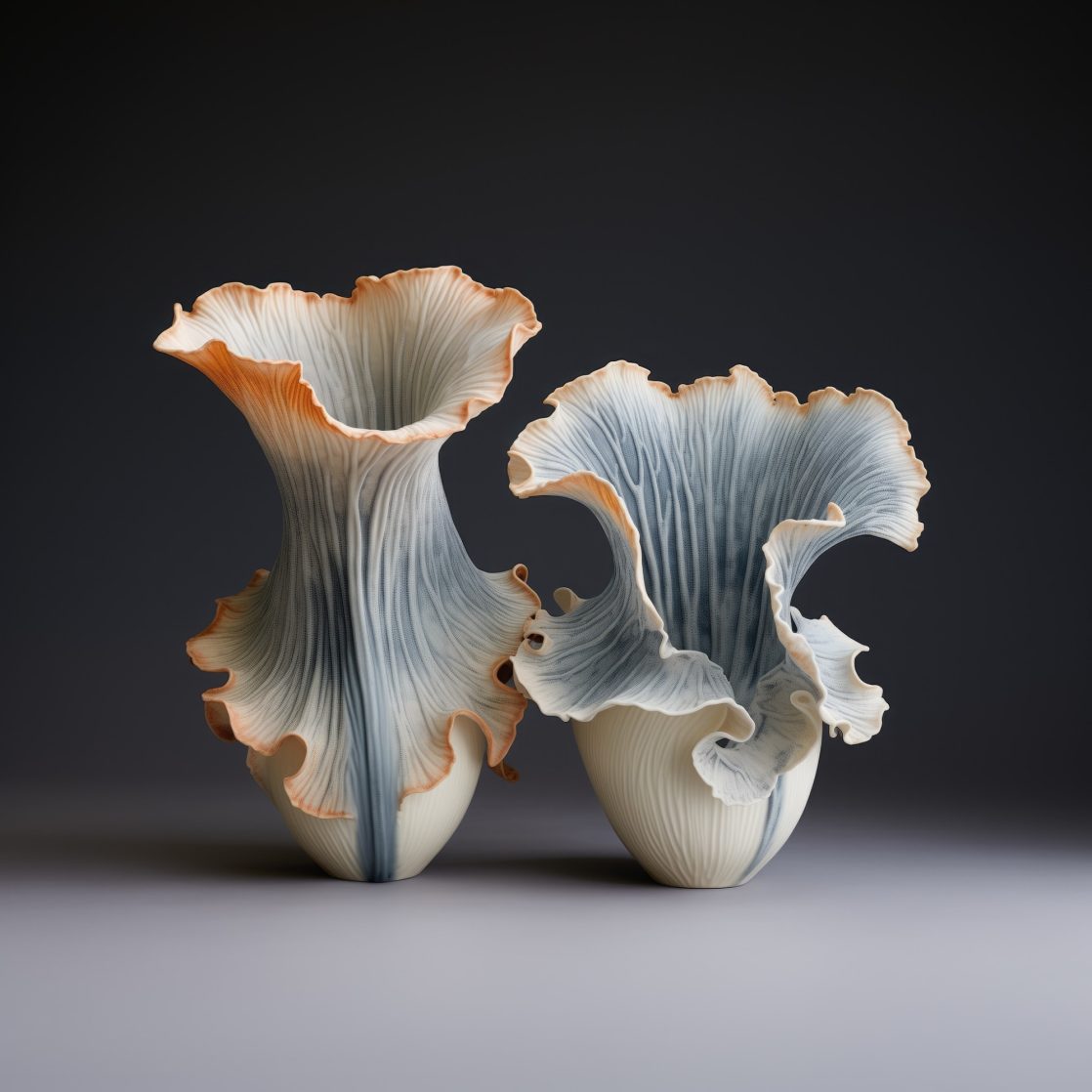
CURATORS OF TECHNOLOGY
As we navigate this new landscape, it is essential to foster a dialogue that embraces both the innovation brought by AI and the rich heritage of traditional ceramics. By doing so, we can ensure that the soul of ceramic art – its deeply human essence – continues to thrive alongside technological advancements.
In the midst of these considerations, the role of the human artist is not diminished but rather redefined. Artists are called to be curators of technology, using AI as a means to expand their creative horizons while staying grounded in the principles of the craft.
AI’s role in ceramics is emerging as a powerful collaborator. Working with AI can be treated as having a conversation with an invisible mentor or a fellow artist, one who challenges and expands your creative horizons.
Elena Howard will be taking part in a talk about AI in ceramics at this year’s Ceramic Art London, Kensington Olympia West, 19-21 April; ceramicartlondon.com
AI TOOLS
AI tools can be incredibly beneficial for ceramics artists, offering unique ways to enhance creativity, efficiency and marketing.
Ideas generation (ChatGPT) – task it with generating ideas or type your own ideas and get the tool to expand them for you, give an interesting twist, or explore ‘what ifs’ for your practice.
Image Generation (Midjourney, DALL-E, Artbreeder): these AI-powered tools can generate inspirational images based on descriptions. Ceramics artists can use them to visualise designs, patterns, or textures for their work.
3D Modelling (Blender, Rhino 3D): AI-enhanced 3D modelling software can help in creating and visualising complex ceramic shapes and forms before the actual crafting begins.
Colour Palette Generators (Adobe Color, Colormind, Canva, Coolors): these tools can suggest harmonious colour schemes for ceramic glazing.
Trend Analysis (Google Trends, Trend Hunter): use these tools to analyse market trends and consumer preferences in ceramic art to strategize your creations and exhibitions effectively.
Social Media Management (Hootsuite, Buffer): these can help artists in marketing their work, scheduling posts, analysing engagement, and targeting the right audience.
Text Generators (ChatGPT, Jasper): useful for generating product descriptions, artist statements, press releases, or promotional content, saving time and enhancing communication with potential buyers.
Voice-activated Assistance (Google Assistant, Alexa): can help in setting reminders, timers, or even providing hands-free assistance in a studio setting.
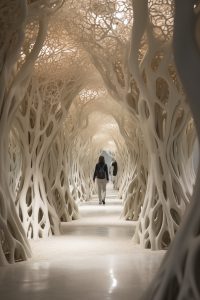
AI IN CERAMICS
AI-Assisted Design: pioneering artists can leverage algorithms to generate complex patterns and shapes, transcending traditional design limitations. This digital partnership allows for the creation of unique ceramic pieces, each a testament to the blend of human artistry and machine precision.
AI-Guided Production: beyond design, AI’s impact extends to the production phase, especially kiln control. Traditional ceramic production can be resource-intensive, with a significant carbon footprint. AI algorithms can precisely calculate the amount of raw material needed for a batch, and optimize firing conditions, thereby reducing energy use and waste at every stage of the process.
Virtual Reality Clay Modelling: artists could use VR environments combined with AI to model ceramics in a virtual space, enabling experimentation with forms and designs without physical material limitations. It may be especially valuable with materials that are new, expensive, or dangerous to handle.
AI in Conservation and Restoration: AI tools can revolutionise how we understand and preserve historical artifacts. Advanced imaging and analysis techniques allow experts to uncover the secrets of ancient ceramics, revealing insights into the techniques and materials used by past masters. They can 3D print missing parts, or even reconstruct entire artworks.
